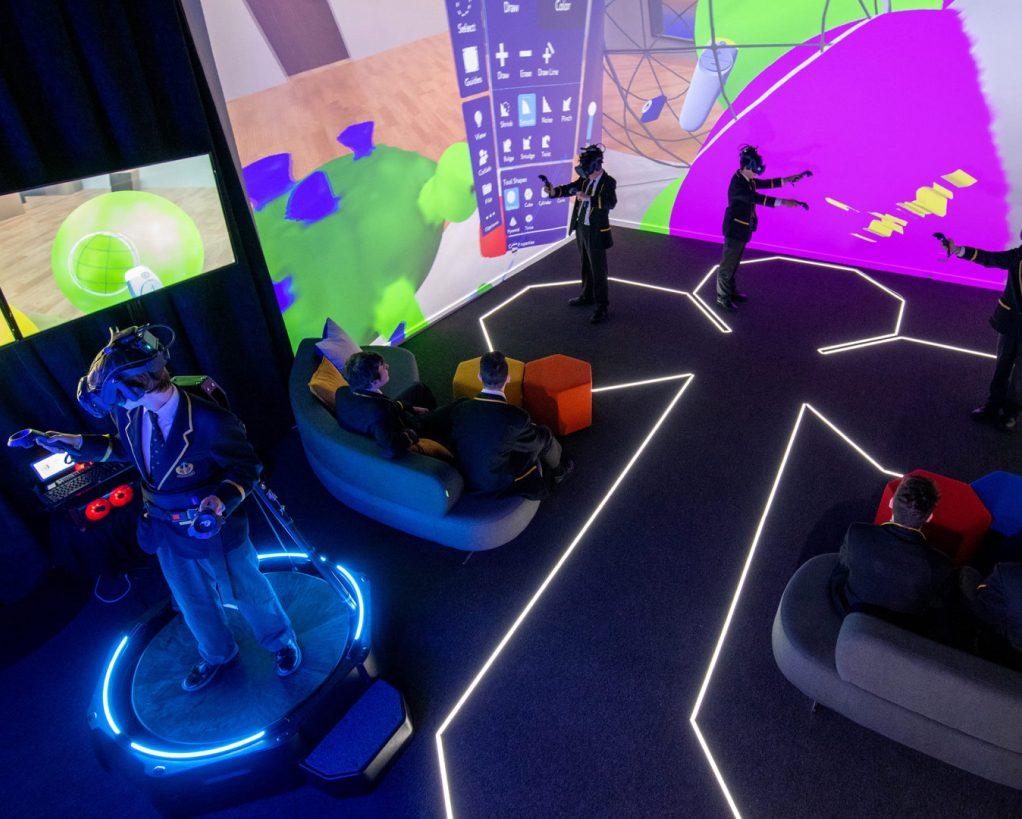Top 7 Case Studies: Successful VR/AR Implementations Transforming Education in Schools
Virtual Reality (VR) and augmented Reality (AR) are rapidly revolutionizing the educational landscape. These immersive technologies are not just futuristic concepts—they’re real tools that empower students and educators, enhancing engagement, understanding, and retention of knowlege. In this article, we’ll explore seven powerful case studies showcasing the impact of successful VR and AR implementations in schools. You’ll discover practical examples, benefits, first-hand experiences, and tips to kickstart your school’s VR/AR journey.
Why VR/AR in Education is a Game changer
- Immersive Learning Experiences: Students learn by actively engaging with realistic simulations, visualizations, and interactive content.
- enhanced Engagement: VR/AR tools captivate learners, making even the most complex subjects exciting and more accessible.
- Improved Retention: Interactive methods help students remember concepts better than traditional lectures.
- Remote and Inclusive Access: VR allows students from different backgrounds to experience global education, museums, and more—right from their classroom.
Implementing VR/AR in schools is more than a trend—it’s a strategic move for institutions aiming to deliver future-ready education. Now, let’s dive into real-world examples of how schools are succeeding with these technologies.
Top 7 VR/AR Case Studies Transforming School Education
1. The Smithsonian Learning Lab (USA)
The Smithsonian Institution collaborated with schools to provide AR lessons via its Learning Lab platform.Students used tablets and smartphones to visually explore artifacts, historical sites, and scientific phenomena with interactive overlays. The experience made history and science lessons immersive, sparking curiosity and deeper inquiry among learners.
- subject Areas: History, Science
- Results: 35% improvement in student engagement and test scores.
2. classvr at Rotherham School (UK)
ClassVR introduced affordable VR headsets to classrooms,enabling students to undertake virtual field trips,explore solar systems,and interact with 3D models. Teachers reported that complex topics,such as cell biology and space exploration,became accessible to all learners,including those with special needs.
- Subject Areas: Biology, Astronomy, Geography
- Outcomes: Increased motivation, improved attendance, and stronger conceptual understanding.
3. Google Expeditions in India
Google’s AR-driven Expeditions program allowed students in rural schools to experience global landmarks, historic events, and deep-sea environments.Even with limited infrastructure, teachers used affordable smartphones and DIY VR headsets to deliver world-class learning experiences.
- Subject Areas: History, Environmental science
- Impact: Broadened worldviews and inspired career aspirations in STEM.
4. Zspace in Miami-Dade County Public Schools (USA)
Zspace‘s mixed reality labs gave middle and high school students hands-on access to anatomy, physics, and engineering simulations. by manipulating virtual organs, machines, and atoms with styluses, students moved beyond textbook theory to practical understanding.
- Subject Areas: STEM (Science,Technology,Engineering,Math)
- Results: Higher pass rates and increased enthusiasm for science careers.
5. CoSpaces Edu in Finland
Finnish schools implemented CoSpaces Edu to empower students as digital creators. Learners designed 3D worlds, built VR games, and programmed interactive environments—boosting their coding skills, creativity, and collaboration.
- Subject Areas: Computer Science,Art,Social Studies
- Achievements: More than 60% of students improved problem-solving abilities.
6. Mondo Manifesto’s AR Literacy Program (Italy)
The Mondo Manifesto pilot brought AR-enabled storybooks to elementary schools in Rome and Milan. By bringing narratives to life with interactive characters and scenes, teachers saw dramatic rises in reading interest, comprehension, and group participation.
- Subject Areas: Literature, Reading
- Benefits: 50% faster literacy gains compared to traditional methods.
7. Dreamscape Learn at Arizona State University–prep Academies (USA)
dreamscape Learn uses cinematic VR storytelling to immerse students in biology and ecology concepts. In partnership with K-12 prep academies, the platform reimagined labs as interactive journeys—such as “rescuing endangered species”—fostering teamwork and real-world problem-solving.
- Subject Areas: Science, Environmental Education
- Impact: Marked rise in test scores and STEM enrollment.
First-Hand Experiences: Voices from Teachers and Students
“When we introduced VR to our biology class, students not only understood the human body better—they were excited to explore and ask deeper questions. It brought the curriculum to life in ways textbooks simply can’t.”
– Mrs. Joan Rivers, Science Teacher, Miami-Dade County Schools
“Using AR with our history projects made ancient Rome feel real. We could walk the streets and interact with monuments. It actually made us want to learn more and see what the past was like.”
– Luca, Grade 5 Student, rome primary school
Practical Tips for Successful VR/AR Integration in Schools
- Pilot Before Expanding: Start with a small group of classes or a single subject to gauge interest and impact.
- Invest in Teacher Training: Facilitate hands-on workshops for educators to confidently use VR/AR tools.
- Choose scalable Platforms: Opt for solutions that work with existing devices and are compatible with your digital infrastructure.
- Embed Learning Outcomes: Align VR/AR activities with curriculum goals—not just entertainment.
- Encourage Student Creation: Let learners design their own AR/VR content to foster creativity and ownership.
- Monitor and Evaluate: Use regular feedback cycles to track educational gains and optimize implementations.
Conclusion: The Shining Future of VR/AR in Education
These seven case studies clearly demonstrate that VR and AR technologies can profoundly transform educational outcomes by making abstract concepts concrete, fostering collaboration, and nurturing curiosity.Schools worldwide—regardless of location or budget—are begining to realize the remarkable benefits of VR/AR-powered teaching and learning.
As immersive technology continues to advance and become more accessible, educators and administrators have a unique opportunity to reimagine classroom experiences. With careful planning, community buy-in, and a commitment to innovation, any school can ignite student passion and unlock academic achievement using VR and AR in education.
Ready to bring immersive learning to your school? Start small, invest in teacher support, and explore the growing collection of educational VR/AR content to inspire students for years to come!

